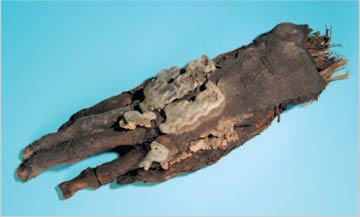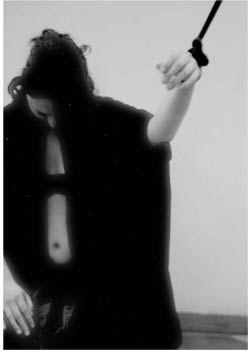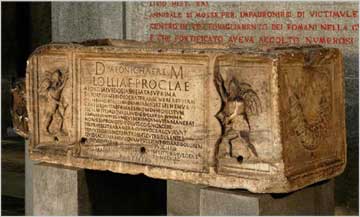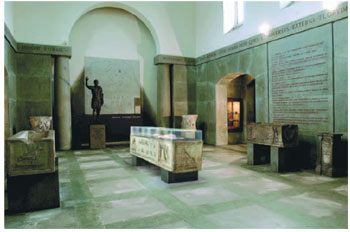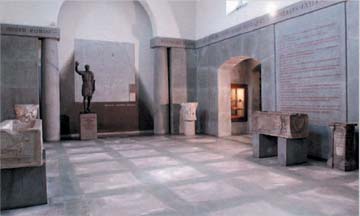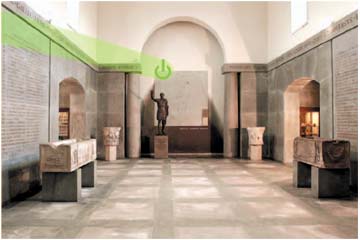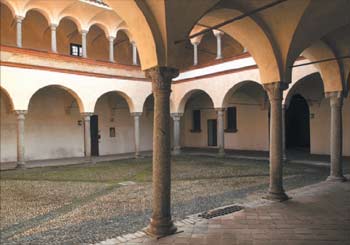
MUSEO
CAMILLO LEONE
Via Verdi 30
tel. 0161/253204
![]() critical text by Elisabetta Dellavalle
critical text by Elisabetta Dellavalle
The rooms in the Leone Museum in Vercelli that host the three Gemine Muse artists are like the Kingdom of Night. The octagonal room, among display cases and burial furniture, houses the work by Valentina Celsi. Jessica Viotti and Salvatore Giò Gagliano, though with a very different approach, both exhibit their works in the Roman room, a place full of sarcophaguses and old memories.These three works tell a myth, the myth of Life: its beginning, its flowing, and its end.The artists are like Clotho, Atropos and Laches, the three Roman Parcae.“Dextera Hominis”, the strong and moving image by Valentina Celsi, is inspired by the small black “mummified hand with amulets”. The artist works with great care and respect and, through that hanged hand on the foreground, she manages to bring under everybody's eyes thousands of years of tortures and abuse, prisons and rot. But doing this, she also highlights a womb, and she gives birth to a new black and white Life: she is like Clotho, the goddess who gives Life.Atropos comes in unexpected, when you turn your head. The acid green light is unnatural in this place full of shadows. It runs through the whole Roman room, drawing a virtual and modern icon, crushed on the wall at the back, a symbol of Life flowing between two narrow banks. Beginning and end, “ON/OFF”, the video installation by Jessica Viotti is Atropos, the goddess who weaves Life, who decides how long we are allowed to stay in this world.It's up to Laches to cut that thread. Her judgment is unappellable. It is useless to complain, as useless as fixing the broken crystal on Lollia's tomb. “…Oltre…”, the installation by Salvatore Giò Gagliano, who is a very acute reader of human feelings, gives an eternal burial to this young Roman girl. Incenses, bandages and perfumes to celebrate forever and ever the most mortal thing on Earth, Man and his vain illusions.
